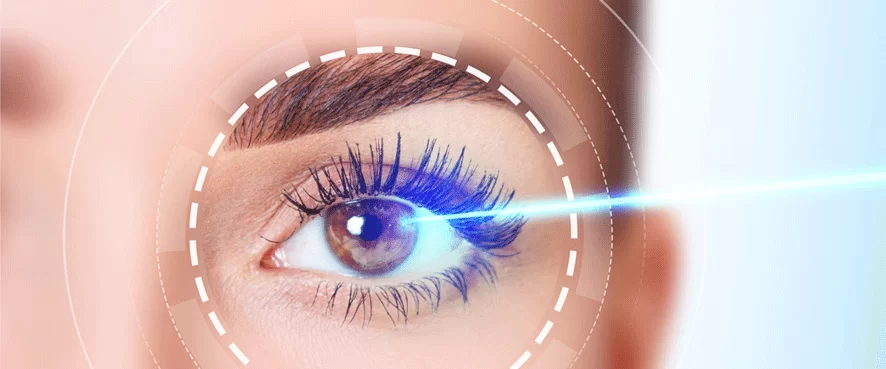Excimer Laser is a UV laser obtained by stimulating a mixture of argon and fluoride gases with electricity. This laser beam, whose wavelength is 193 nm, has been used worldwide for the treatment of refractive errors in the eye for many years. It is effective in treating eye defects such as myopia, astigmatism, and hyperopia. Fully computer-controlled Excimer Laser devices help prevent vision disorders by changing the shape of the cornea. Before Excimer Laser Surgery, patients should refrain from using contact lenses for a certain period. Those who use hard lenses should stop using them for 3 weeks, while those who use soft lenses should stop using them for 1 week prior to the surgery.
In addition to the question of what Excimer Laser is, who may undergo this treatment is also a subject of curiosity. Not everyone is suitable for Excimer Laser Surgery. Patients need to meet certain conditions to undergo this surgery. For example, patients with myopia up to -10 diopters, hyperopia up to +6 diopters, or astigmatism up to 6 diopters, who are over 18 years old and have suitable eye structure, may undergo this surgery. However, Excimer Laser is not suitable for individuals with eye diseases such as Glaucoma, Keratoconus, systemic diseases like diabetes and Rheumatism. Moreover, this treatment cannot be applied to pregnant or breastfeeding women.
How is Excimer Laser Treatment Performed?
Depending on the level of visual impairment, the Excimer Laser beam is programmed with a computer. This beam reshapes the cornea, the transparent layer of the eye, providing accurate focusing and clear vision. The question of how Excimer Laser is performed is a topic of interest for patients with vision problems who are tired of wearing glasses or lenses. The laser applied to the stroma layer beneath the epithelial layer of the cornea is carried out using different methods. The methods of excimer laser treatment are as follows:
PRK (Photorefractive Keratectomy): The “No Touch” method is an advanced version of PRK. In this method, laser is applied to the cornea without scraping the corneal epithelium or touching the eye. There may be a burning and pain sensation for 3 to 7 days after the operation. It may take 3-6 weeks to achieve comfortable vision.
LASIK (Laser-Assisted In Situ Keratomileusis): In this method, a flap is created on the cornea. Previously, this flap was created with a blade, but nowadays it is created with a femtosecond laser. After lifting the flap, Excimer Laser is applied to the underlying tissue, reshaping the cornea. Femtolasik, known as iLASIK, is a high-technology method. It is fully computer-controlled and a customized treatment that is performed based on individual’s eye map, developed specifically for less pain and satisfactory correction in patients after excimer laser.




